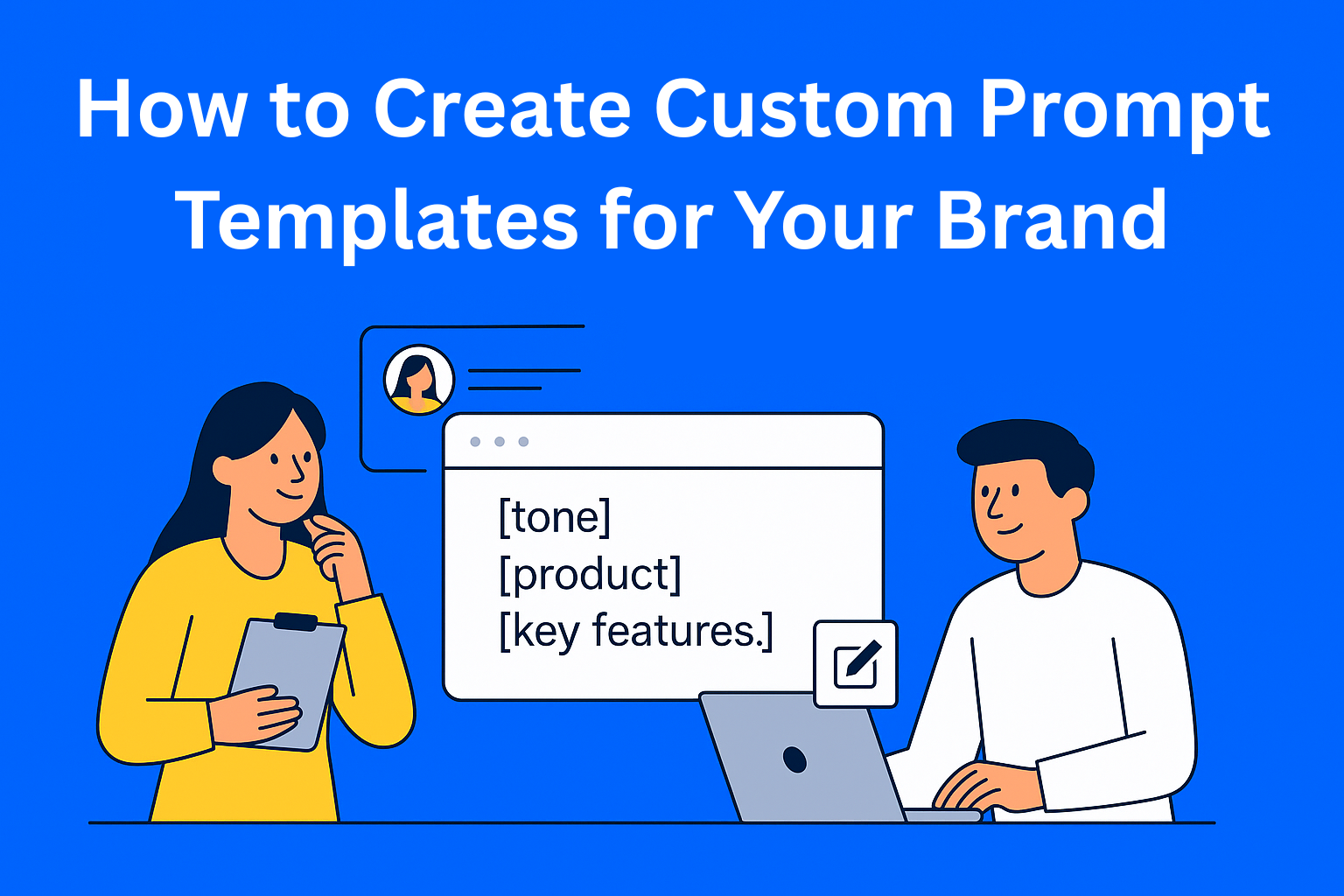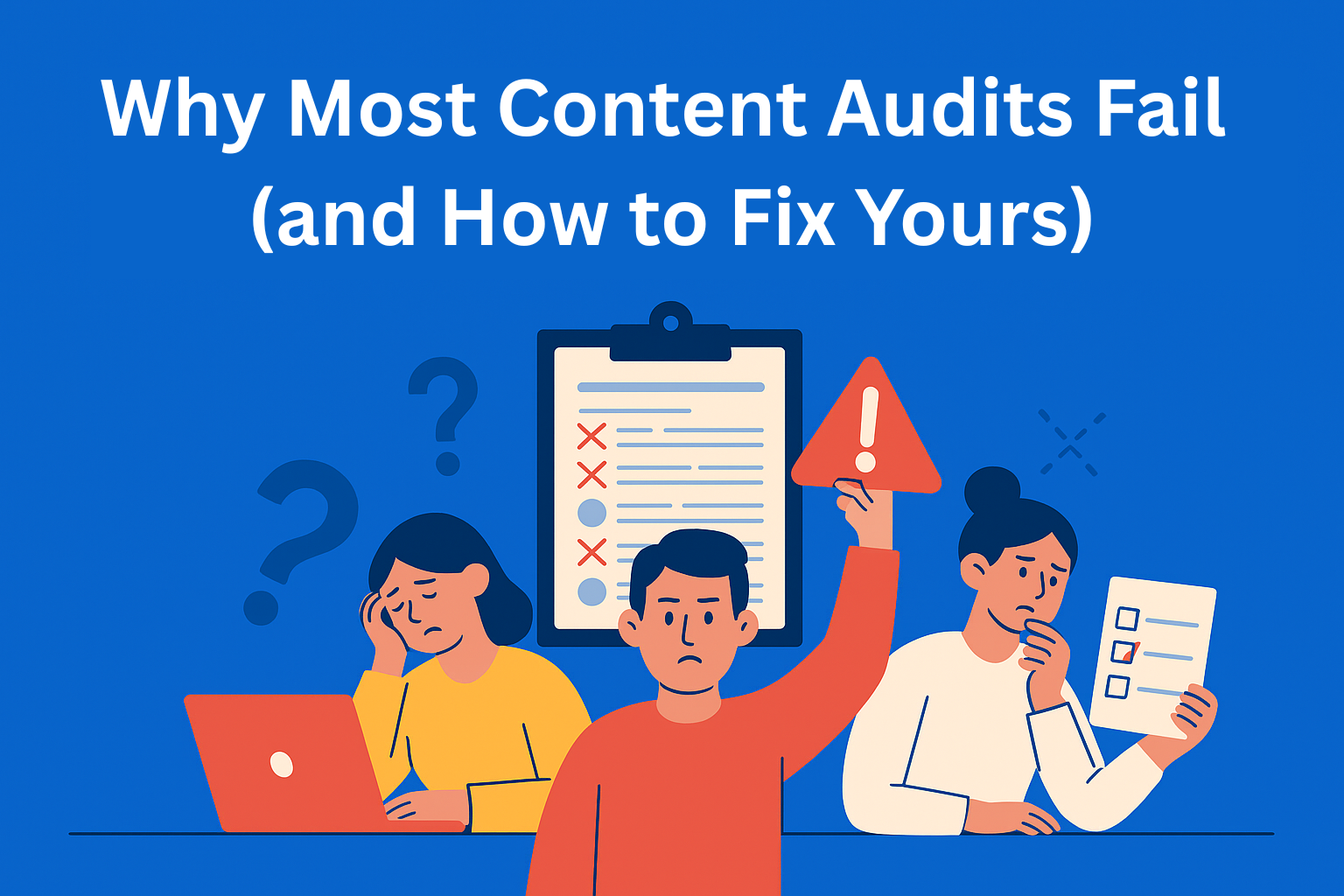How to Create Custom Prompt Templates for Your Brand
Discover how to create reusable AI prompt templates tailored to your brand voice. Boost consistency, work faster, and get better content results with clear, structured instructions.

Writing prompts has become a key part of content creation, especially if you're using AI tools like ChatGPT, Claude, or Gemini. The clearer and more specific your prompts are, the better the results you'll get from the AI. But typing out the same instructions every time can be tiring. That’s why you need to create custom prompt templates.
In this guide, I’ll show you how to make templates that match your brand’s voice and are easy to reuse. The steps are simple, and you can start using them right away.
Key Takeaways
- Prompt templates save time by turning repeat instructions into reusable formats with simple variables like [product] or [tone].
- Consistency is key - templates help maintain your brand voice across all AI-generated content.
- Organize by use case: product descriptions, emails, social posts, outlines… each should have its own template.
- Always test and refine your prompts to ensure the AI output matches your tone, clarity, and goals.
- Tools like EasyContent make it easier to store, share, and evolve your template library with your team.
What Are Prompt Templates?
Think of a prompt as an instruction you give to AI. Instead of writing that instruction from scratch every time, you create a template - a reusable format with variable parts like [tone], [product], [audience] that you can easily customize to fit different needs while keeping your brand’s style and goals.
Example:
- Prompt: "Write a short and engaging text that describes an organic shampoo for people who care about natural hair care. Highlight why it’s good and who it’s for (e.g., sulfate-free, suitable for dry hair, etc.)."
- Template: "Write a [style] description for [product] aimed at [target audience], highlighting [key benefits]."
This system saves time, keeps your tone consistent, and delivers better AI results.
Why Are Custom Prompts Important for Your Brand?
Consistency. When AI understands how your brand sounds, every piece of content will follow the same tone. Prompt templates help ensure the output always sounds like something your team would write - with the same message and personality.
Efficiency. Instead of rewriting the same instructions, you use ready-made templates. This speeds up your workflow.
Quality. The more precise and structured your prompts are, the more accurate and useful the results from AI will be.
That’s why many teams use tools like EasyContent, which helps you create and manage templates all in one place, alongside your full content process.
How to Create Custom Prompt Templates: Step by Step
1. Define Your Brand Voice and Tone
Before building prompt templates, figure out how your brand should sound. Is it:
- Professional or playful?
- Casual or formal?
- Straightforward or creative?
Write down a few examples of what your brand voice should sound like - and what it shouldn't. For example, write one sentence that matches your style, and one that doesn’t. This makes it easier for both your team and the AI to stay aligned.
2. Identify Repetitive AI Tasks
Look at where you regularly use AI. It might be for:
- Product descriptions (e.g., for an online store)
- Emails to clients or subscribers (like newsletters or promotions)
- Instagram captions for posts and stories
- Blog outlines (structure with headlines and sections)
Create one template for each of these use cases. For example, build a standard structure for writing product descriptions that you can reuse across different items. Do the same for emails, social media posts, etc.
Tools like EasyContent make this easier by letting you organize templates by content type, topic, or platform.
3. Build a Flexible Format
Add variables to your template - these are spots you can change depending on the situation. Instead of writing a brand-new prompt each time, use placeholders like [product], [tone], or [audience] that you can easily swap.
Examples:
- "Write a short tweet in a [desired tone] to promote [specific product] for [target audience]. Focus on the product’s main benefit."
- "Create an Instagram caption in a [specific tone] to promote [event]. End with a strong call to action like 'Sign up', 'Buy now', or 'Learn more'."
Pro tip: Try a few versions of the prompt and see which one gives the best result.
4. Organize Your Prompt Library
Instead of saving templates in scattered docs and tools like Notion or Google Drive, use platforms that support template organization, like EasyContent. You can create custom templates (for example, one for newsletters, one for blogs, etc.), and you can add the prompts directly to the template.
5. Test, Improve, and Refine
A prompt template isn’t set in stone. Always test it:
Try running the prompt in your AI tool and see what kind of responses you get. Do they make sense and match what you expected? If not, maybe you need to add more context or simplify the instructions. Also, check if the tone matches your brand’s style.
Bonus Tips
- Include examples. When the AI sees an example of the final output, it understands the task better. For instance, if you're asking it to write an Instagram post, include a sample post that you like. That helps guide the tone and style.
- Use prompt chaining. For more complex tasks, break things into smaller steps. Instead of asking AI to do everything at once, first ask for a content outline, then generate the intro, body, and conclusion. This gives you better, more structured results.
- Add SEO and brand keywords. If you're creating a blog or sales content template, make sure to include important keywords related to your brand or product. These are the terms your audience is searching for, and they help your content rank better online.
Conclusion
Using AI without a prompt strategy is ineffective. Take the time to build your own templates, adjust them to match your brand’s tone, and organize them smartly. When you combine that with a tool like EasyContent, you not only save time, but also seriously improve the content your team creates every day - making it clearer, more useful, and more aligned with your brand.
It’s time for AI to work for your brand - not the other way around.






